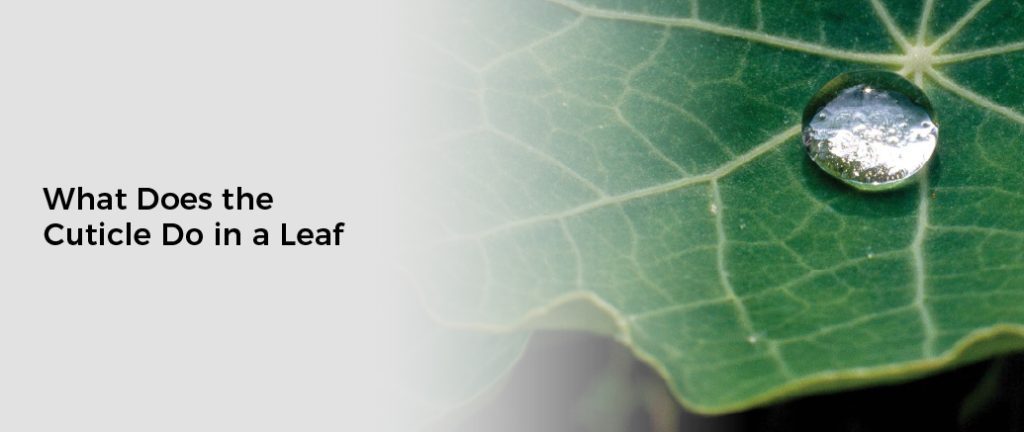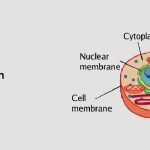If you’ve ever looked closely at a leaf, then you’ve likely seen the cuticle – it’s a thin wax layer along the edge of the leaf. But have you ever wondered what this seemingly insignificant structure actually does for plants? Today we’re going to look into why this waxy covering is important and how it aids plant growth. From protecting leaves from water loss to providing genetic material for insect pollinators, the role of the cuticle in regulating plants’ environmental interactions is critical and cannot be ignored. So, let’s dive in – explore all aspects of the cuticle’s anatomy, function, and importance!
What Is a Leaf Cuticle?
A leaf cuticle is a thin layer of cells covering a leaf’s surface. It protects the plant from water loss, regulates temperature, and absorbs sunlight. In addition, the cuticle can play an important role in a plant’s ability to use resources such as water and nutrients.
What Does the Cuticle Do in a Leaf?
The cuticle is a slim layer of wax on the leaf surface with one main purpose – to help restrict the amount of water and minerals that evaporate from the leaf. By keeping the leaf surface moist, it helps it to photosynthesize more efficiently. Additionally, it acts as a protective barrier against invading organisms such as fungi and bacteria. It also improves tolerance to environmental stresses like drought and wind damage. The cuticle comprises several components, including cutin, waxes, and other fatty acids.
How do The Cuticle Functions In Plants?
First, it should be noted that the role of the leaf cuticle varies depending on the type of plant. For example, the cuticle functions mainly as an obstacle to water loss in vascular plants like trees and vines. This is done by forming a barrier between water and the leaves cells, preventing moisture from escaping into the air or soil. In addition, this layer of cells also helps to reduce drag while moving through water or air.
On the other hand, non-vascular plants like mosses and ferns don’t need as much protection against moisture since they extract their nutrients from soil or air. As a result, they don’t need a thick protective layer on their leaves as vascular plants do.
Instead, these plants rely on other mechanisms to keep them hydrated – such as transpiration (the process by which liquid water is released through plant tissues) or desiccation (the process by which sap dries up).
Secondarily,cuticles have been found to play an important role in photosynthesis. The light energy enters through small openings called stomata located on top of leaves’ cells.And hits specific pigment molecules inside these cell membranes called phycobilisomes. These pigment molecules then absorb photons (light particles) and convert them into electrons that Photosynthesis uses.
The Role of Cuticles in Photosynthesis
Cuticles are essential for photosynthesis, as they protect the plant’s surface from damage caused by sunlight and temperature fluctuations. The leaf cuticle also helps to reduce water loss, which is important for a healthy photosynthetic process.
Cuticles are composed of waxes, oils, and other compounds that form a protective barrier over the leaf surface. This barrier helps to protect the plant from excessive sunlight, heat, and other environmental stresses that can damage the delicate photosynthetic tissues within the leaf.
The presence of cuticles also helps to reduce water loss through transpiration and keep chloroplasts in healthy condition. Without these protective layers, plants would not be able to perform essential functions like photosynthesis. Therefore, cuticles play a crucial role in photosynthesis and the health of plants in general.
Cuticle Protection in Plants
The cuticles on the surface of a plant protect it from direct sunlight, heat, and other environmental stresses. These protective layers are especially important in plants because they keep chloroplasts healthy and efficient. Chloroplasts are crucial for photosynthesis, as they contain the molecules required to convert light energy into chemical energy.
The waxes and oils that make up the cuticle helps to reduce water loss, which is important for efficient photosynthesis. Furthermore, the cuticles also protect from predators and parasites, allowing plants to survive in their environments.
Cuticles can be damaged by extreme temperatures or through mechanical damage caused by insects. To protect themselves from such threats, plants have developed a range of strategies, such as mechanical thorns, waxy secretions, and volatile chemicals. These strategies help the plant to protect its cuticles from damage and ensure that photosynthesis can continue unhindered.
Final Words
The leaf cuticle is an important layer of protection on leaves. It helps reduce water loss and the entry of pathogenic organisms into the plant. In addition, it also plays an important role in helping plants absorb light energy for photosynthesis.
Cuticles can vary in thickness from species to species, but they all help protect the delicate surface of each leaf as it grows and matures. With our improved understanding of what the cuticle does for us, we can now utilize this knowledge to develop further safe and efficient ways to improve how plants adapt to their environment regarding water retention and disease defense. Though this layer of protection may be small, its impact on our environment is huge!


